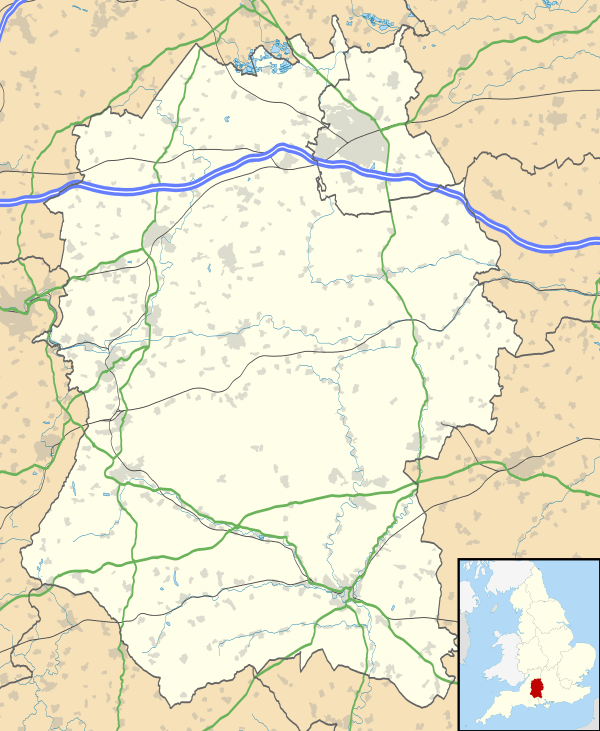South Newton, Wiltshire
| South Newton | |
 St. Andrew's parish church |
|
 South Newton |
|
| Population | 819 (2011 Census)[1] |
|---|---|
| OS grid reference | SU086345 |
| Unitary authority | Wiltshire |
| Ceremonial county | Wiltshire |
| Region | South West |
| Country | England |
| Sovereign state | United Kingdom |
| Post town | Salisbury |
| Postcode district | SP2 |
| Dialling code | 01722 |
| Police | Wiltshire |
| Fire | Dorset and Wiltshire |
| Ambulance | South Western |
| EU Parliament | South West England |
| UK Parliament | Salisbury |
| Website | Parish Council |
Coordinates: 51°06′36″N 1°52′44″W / 51.110°N 1.879°W
South Newton is a village and civil parish about 4 miles (6.4 km) north-west of Salisbury in Wiltshire, England. The village straddles the A36 road. Topologically it lies between chalk downs to the north-east and downland with Grovely Wood to the south-west. In the valley is the River Wylye with water meadows. The Wessex Main Line railway passes the village on the opposite bank of the River Wylye.
The parish includes the village of Stoford (not to be confused with Stoford, Somerset) and the hamlets of Little Wishford and Chilhampton.
History
There is scant evidence of significant prehistoric habitation in South Newton.
There has been a settlement in the village since Saxon times and South Newton is largely a 10th-century estate which stretched from the River Wylye to the ridge of the hills to the north-east. The village originated at about the same time as its three neighbours Stoford, Chilhampton and Little Wishford, each village having a strip of land down to the river and up onto the downland of the drainage area.
The size of South Newton has changed over the centuries. In the mid-nineteenth century the parish included part of North Ugford and part of the present day Wilton. Various other portions have been ceded to other parishes during the last 150 years. About 300 yards (270 m) south of the church is an ancient watermill on the banks of the River Wylye[2]
The railway between Salisbury and Westbury running past the village was completed in 1856, when Wishford railway station was opened at Great Wishford about 1 mile (1.6 km) north-west of South Newton. The station was closed in 1955 but the railway remains open as part of the Wessex Main Line.
Parish church
The Church of England parish church of Saint Andrew is at the east end of the village. The church was dedicated to Saint Andrew in 1763, but there are features which show a much earlier history. The church was constructed largely of rubblestone with ashlar dressing. There are some areas of flint and stonework chequering. In 1861-2 the church underwent radical reconstruction to designs by T.H. Wyatt.[3]
The tower was rebuilt in the 14th century. In 1553 it had four bells, two of which are survive as the current tenor and second bell. They were cast by the Salisbury foundry, one in about 1400 and the other in about 1499.[4] The present tenor bell was cast by John Wallis of Salisbury[5] in 1610.[4] The remaining bells that complete the current ring of six were cast by John Warner of Cripplegate[5] in London: one in 1862 and the treble and second bell in 1887, the year of Queen Victoria's Golden Jubilee.[4]
Local economy
The village has a small light industrial estate containing about 10 businesses. Nearby is a large building and maintenance company. The village also has a large neuro-physiological rehabilitation nursing home. These companies provide significant local employment.
Social amenities
The village has a public house, The Bell Inn.[6] South Newton has a cricket club[7] and a junior football club.[8]
References
- ↑ "Parish population 2011". Office for National Statistics. Retrieved 18 March 2015.
- ↑ Baggs et al., 1995, pages 213-227
- ↑ Pevsner & Cherry, 1973, page 473
- 1 2 3 "Place: South Newton S Andrew". Dove's Guide for Church Bell Ringers. Retrieved 10 August 2010.
- 1 2 "Bell Founders". Dove's Guide for Church Bell Ringers. Retrieved 18 March 2010.
- ↑ The Bell Inn
- ↑ South Newton CC
- ↑ Moss, Neil. "Junior Football 2008/2009 Season". South Newton & Stoford, Wiltshire, UK. South Newton Parish Council. Retrieved 9 August 2010.
Sources
- Crowley, D.A. (ed.); Baggs, A.P.; Freeman, Jane; Stevenson, Janet H. (1995). Victoria County History: A History of the County of Wiltshire: Volume 15: Amesbury hundred, Branch and Dole hundred. pp. 213–227.
- Pevsner, Nikolaus; Cherry, Bridget (revision) (1975) [1963]. The Buildings of England: Wiltshire. Harmondsworth: Penguin Books. p. 473. ISBN 0 14 071026 4.
External links
- "South Newton". Wiltshire Community History. Wiltshire Council. Retrieved 1 May 2015.
-
 Media related to South Newton at Wikimedia Commons
Media related to South Newton at Wikimedia Commons -
 Media related to St Andrew's Church, South Newton at Wikimedia Commons
Media related to St Andrew's Church, South Newton at Wikimedia Commons
